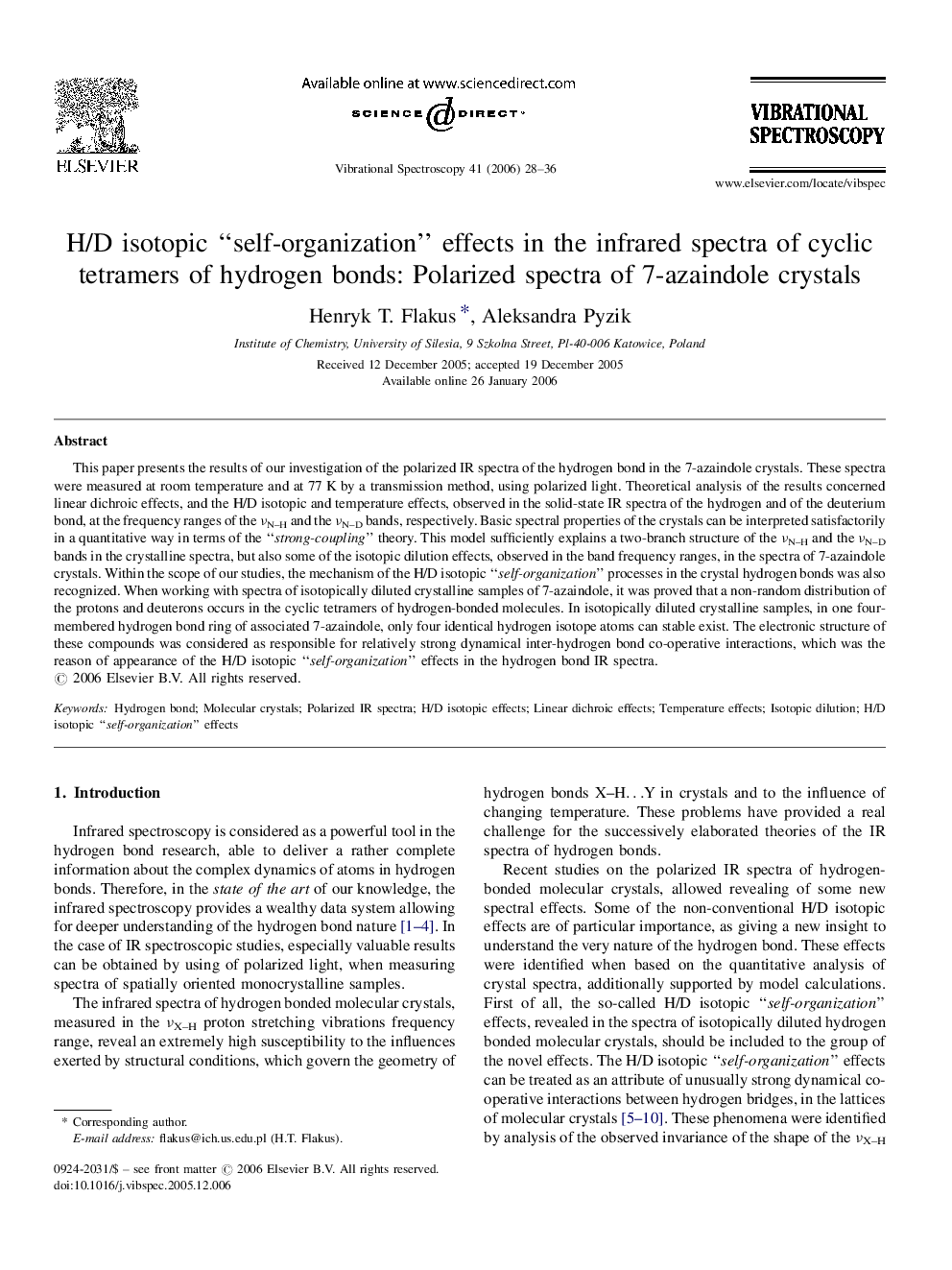| کد مقاله | کد نشریه | سال انتشار | مقاله انگلیسی | نسخه تمام متن |
|---|---|---|---|---|
| 1251126 | 970889 | 2006 | 9 صفحه PDF | دانلود رایگان |
عنوان انگلیسی مقاله ISI
H/D isotopic “self-organization” effects in the infrared spectra of cyclic tetramers of hydrogen bonds: Polarized spectra of 7-azaindole crystals
دانلود مقاله + سفارش ترجمه
دانلود مقاله ISI انگلیسی
رایگان برای ایرانیان
کلمات کلیدی
موضوعات مرتبط
مهندسی و علوم پایه
شیمی
شیمی آنالیزی یا شیمی تجزیه
پیش نمایش صفحه اول مقاله

چکیده انگلیسی
This paper presents the results of our investigation of the polarized IR spectra of the hydrogen bond in the 7-azaindole crystals. These spectra were measured at room temperature and at 77 K by a transmission method, using polarized light. Theoretical analysis of the results concerned linear dichroic effects, and the H/D isotopic and temperature effects, observed in the solid-state IR spectra of the hydrogen and of the deuterium bond, at the frequency ranges of the νN-H and the νN-D bands, respectively. Basic spectral properties of the crystals can be interpreted satisfactorily in a quantitative way in terms of the “strong-coupling” theory. This model sufficiently explains a two-branch structure of the νN-H and the νN-D bands in the crystalline spectra, but also some of the isotopic dilution effects, observed in the band frequency ranges, in the spectra of 7-azaindole crystals. Within the scope of our studies, the mechanism of the H/D isotopic “self-organization” processes in the crystal hydrogen bonds was also recognized. When working with spectra of isotopically diluted crystalline samples of 7-azaindole, it was proved that a non-random distribution of the protons and deuterons occurs in the cyclic tetramers of hydrogen-bonded molecules. In isotopically diluted crystalline samples, in one four-membered hydrogen bond ring of associated 7-azaindole, only four identical hydrogen isotope atoms can stable exist. The electronic structure of these compounds was considered as responsible for relatively strong dynamical inter-hydrogen bond co-operative interactions, which was the reason of appearance of the H/D isotopic “self-organization” effects in the hydrogen bond IR spectra.
ناشر
Database: Elsevier - ScienceDirect (ساینس دایرکت)
Journal: Vibrational Spectroscopy - Volume 41, Issue 1, 30 May 2006, Pages 28-36
Journal: Vibrational Spectroscopy - Volume 41, Issue 1, 30 May 2006, Pages 28-36
نویسندگان
Henryk T. Flakus, Aleksandra Pyzik,